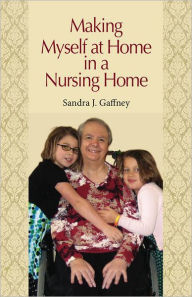The Human Machine - The Anatomical Structure & Mechanism of the Human Body
by George B. Bridgeman
2020-04-21 22:12:40
The Human Machine - The Anatomical Structure & Mechanism of the Human Body
by George B. Bridgeman
2020-04-21 22:12:40
INTRODUCTION IT appears to be a fixed law that the contraction of a muscle shall be toward its centre, therefore, the subject for mechanism on each occasion is so to modify the figure, and adjust the position of the muscle as to produce the motion re...
Read more
INTRODUCTION IT appears to be a fixed law that the contraction of a muscle shall be toward its centre, therefore, the subject for mechanism on each occasion is so to modify the figure, and adjust the position of the muscle as to produce the motion required agreeably with this law. This can only be done by giving to different muscles a diversity of configuration suited to their several offices and to their situation with respect to the work which they have to perform. On which account we find them under a multiplicity of forms and altitudes sometimes with double, sometimes with treble tendons sometimes with none, sometimes with one tendon to several muscles at other tipies with one muscle to several tendons. The shape of the organ is susceptible of an incalculable variety, while the original property of the muscle. The law and line of its contraction remains the same and is simple. Herein the muscular system may be said to bear a perfect resemblance to our works of art. An artist does not alter the native quality of his materials or their laws of action. He takes these as he finds them. His skill and ingenuity are employed in turning them such as they are, to his account by giving to the parts of his machine a form and relation in, which these unalterable properties may operate, ., The mouth was made to cut and grind food. To save this trouble and work, mechanical devices such as the mill- stone were put into operation. Hence the upper stone ground while the lower was stationary, In the human machine, the upper stone is fixed and the lower does the grinding. The only movable bone of the skull is the lower jaw which hinges to the head just in front of the ear. It acts as a lever of the third order. The cutting and grinding force is controlled by powerful muscles. The one that raises the lower jaw is named The temporal muscle attached to the coronoid portion of lower jaw it passes upward under the zygomatic arch covering the tern oral fossa. From its attachment above, its fibres converge before passing under the arch. The inferior maxillary or lower jaw bone is shaped somewhat like a horse-shoe. Its front projection forms the chin it then passes backward on either side of the mouth then bends upwards ending in a head or condyle that articulates with the temporal bone. The muscles of mastication are of marked prominence and are called masseters. They move the lower jaw and are inserted into the vertical branch of the lower jaw-bone the upper part or the superiot border arises from the zygomatic arch. By its contraction it brings the teeth together in cutting and grinding. Unlike the facial muscles or muscles of expression, the temporal and the masseter extend from the surface of one bone to that of another, that is, from the unmovable bones of the head to the movable lower jaw-bone. In the human species, the mouth not only is used for the grinding and breaking down of food, but also the tespiration of air and the utterance of sound.
Less































